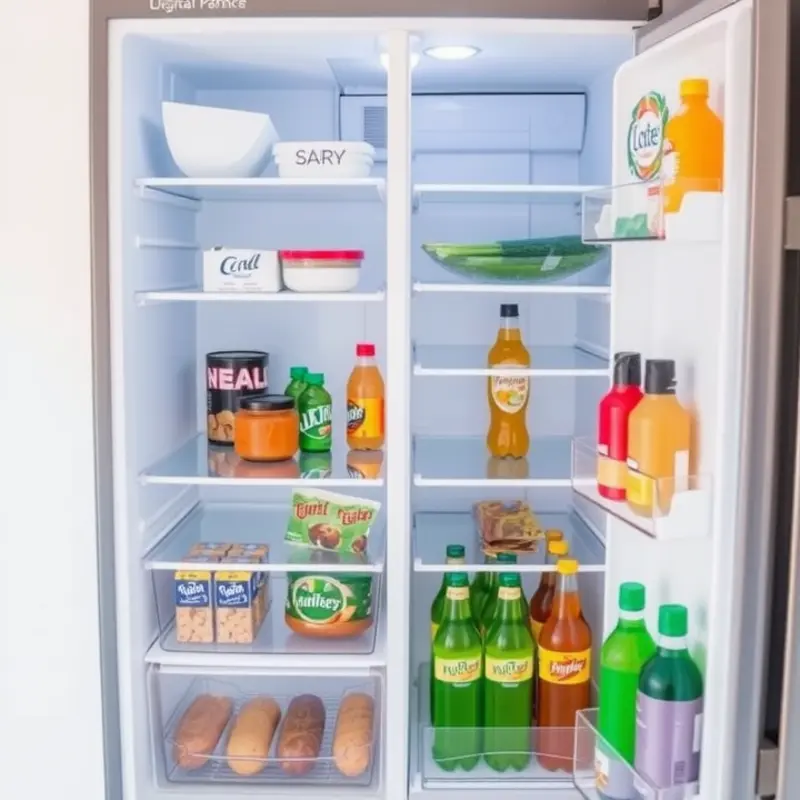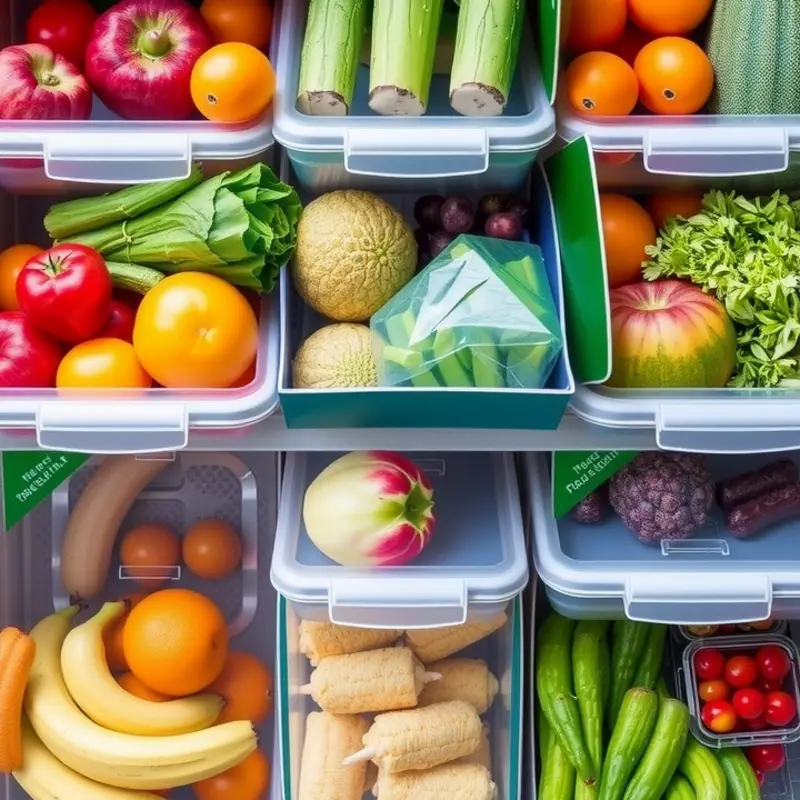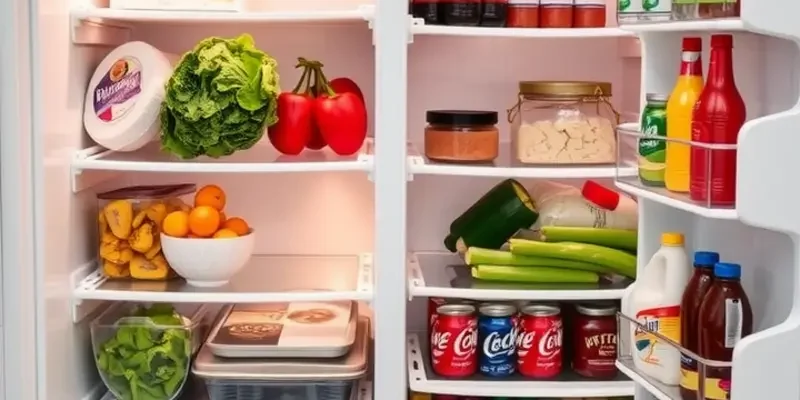Maximizing the efficiency of your refrigerator not only preserves your food but also promotes healthier eating habits and minimizes waste. With a few simple strategies, you can organize your fridge like a pro. This approach makes meal prep seamless and keeps your food fresh. Let’s explore practical tips to create a well-arranged smart fridge that caters to your lifestyle while ensuring food safety and management.
The Essentials of Smart Fridge Organization

A properly organized fridge isn’t just about aesthetics; it’s crucial for food safety and waste minimization. Understanding how to arrange the contents effectively means considering temperature zones, accessibility, and even labeling. By optimizing each aspect of your fridge, you can easily maintain a fresh, fully-stocked, and efficient kitchen.
Temperature Zones
Start by identifying different temperature zones within your fridge. Most fridges have three primary zones: coldest at the back, moderate in the middle shelves, and warmer in the door. Raw meats and seafood should be stored at the back of the bottom shelf. The cooler temperature helps slow bacterial growth, maintaining freshness longer.
Dairy products and eggs belong in the middle shelves where the temperature is steady. Vegetables and fruits often have their own drawers with humidity controls. Higher humidity is useful for leafy greens, preventing them from wilting too quickly. Meanwhile, fruits do better in lower humidity settings.
Accessibility and Labeling
Organizing your fridge with accessibility in mind eases meal preparation and helps prevent food wastage. Keep frequently used items like condiments and snacks at eye level for easy reach. To avoid having items pushed to the back and forgotten, try a FIFO (First In, First Out) system. This helps ensure that older products are used before newer purchases.
Labeling is another effective tool for maintaining order. Clear, concise labels help identify contents and expiration dates at a glance. Consider using erasable markers on containers or dedicated fridge labels that are easy to remove or modify. Not only does this lead to better management of your fridge’s contents, but it also significantly reduces the likelihood of food spoilage.
Strategic Placement
Every item in your fridge can have an optimal spot. For instance, juice and non-perishable drinks can be stored in the fridge door, the warmest part of the fridge. Meanwhile, leftovers should be placed on higher shelves for easy visibility and quick access.
This strategy also applies to reducing food waste. Keeping perishables in plain sight directly addresses concerns related to low-waste cooking and prep. When you see what needs to be consumed first, you’re less likely to let it go bad.
Conclusion
Ultimately, a smart fridge organization promotes both safety and sustainability. By deliberately arranging items based on temperature, usage frequency, and visibility, you maintain the freshness and quality of your food longer. This strategic approach not only reduces food waste but also makes meal preparation more efficient. Embrace the power of an organized fridge and elevate your kitchen experience to a more sustainable level.
Smart Tips for Extending Freshness and Reducing Waste

Once your fridge is organized, you’ll want to employ strategies that not only maintain that order but also enhance the longevity of your food. The right storage containers can make a significant difference in how long your food stays fresh. Opt for airtight containers that protect against moisture and prolong shelf life. Glass containers are an excellent choice as they prevent food stains and retain freshness without altering flavors. When choosing containers, consider those that are stackable to optimize space in your fridge.
Understanding expiration dates and how to interpret them is vital. These dates are generally suggestions for optimal quality, not safety deadlines. For many products, the label indicates the manufacturer’s estimation of when the food will taste best. Proper knowledge of this can significantly reduce unnecessary disposal. Ensure you’re familiar with which items, like dairy and meats, need stricter adherence to expiration dates for safety reasons.
Visibility strategies are another method you can use to keep track of what you have and reduce waste. Position new purchases at the back, bringing older items to the front, a technique sometimes referred to as ‘first-in, first-out.’ Utilize transparent containers and label leftovers with dates to avoid forgetting them at the back of the fridge.
In addition to physical organization, temperature control plays a critical role in extending freshness. Most refrigerators should maintain a temperature below 40°F (4°C) to slow bacterial growth. It’s worth noting that different zones in your fridge have varying temperature levels, with the bottom being the coldest ideal for raw meats, while the top shelves suit ready-to-eat foods.
To further reduce waste, consider experimenting with meal prepping tactics such as ingredient batching. For instance, pre-cut vegetables or portioned protein can be planned for the week, minimizing daily prep and the tendency to overbuy. Learn more about practical ingredient management in this practical ingredient batching guide.
By applying these practical tips, not only will your groceries last longer, but the attention to food safety will ensure you and your family enjoy the healthiest meals possible.
Final words
A well-organized smart fridge is not just about aesthetics; it’s a powerful tool for ensuring food safety and minimizing waste. By following these actionable strategies to arrange your fridge effectively, you’re taking a significant step towards a more efficient kitchen management system. Emphasizing proper organization and smart tips for food storage enhances your ability to maintain freshness and reduces the chances of food spoiling before you have the chance to enjoy it. Start implementing these ideas today to transform your fridge into a beacon of efficiency.







